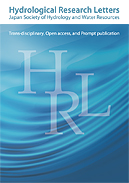Volume 3
Displaying 1-12 of 12 articles from this issue
- |<
- <
- 1
- >
- >|
Original Research Letter
-
2009Volume 3 Pages 1-5
Published: 2009
Released on J-STAGE: January 10, 2009
Download PDF (1434K) -
2009Volume 3 Pages 6-9
Published: 2009
Released on J-STAGE: January 29, 2009
Download PDF (1396K) -
2009Volume 3 Pages 10-13
Published: 2009
Released on J-STAGE: March 14, 2009
Download PDF (387K) -
2009Volume 3 Pages 14-17
Published: 2009
Released on J-STAGE: April 04, 2009
Download PDF (627K) -
2009Volume 3 Pages 18-21
Published: 2009
Released on J-STAGE: April 15, 2009
Download PDF (741K) -
2009Volume 3 Pages 22-26
Published: 2009
Released on J-STAGE: June 23, 2009
Download PDF (480K) -
2009Volume 3 Pages 27-31
Published: 2009
Released on J-STAGE: July 07, 2009
Download PDF (1123K) -
2009Volume 3 Pages 32-35
Published: 2009
Released on J-STAGE: July 11, 2009
Download PDF (373K) -
2009Volume 3 Pages 36-40
Published: 2009
Released on J-STAGE: July 31, 2009
Download PDF (2189K) -
2009Volume 3 Pages 41-44
Published: 2009
Released on J-STAGE: September 19, 2009
Download PDF (80K) -
2009Volume 3 Pages 45-48
Published: 2009
Released on J-STAGE: November 26, 2009
Download PDF (398K) -
2009Volume 3 Pages 49-53
Published: 2009
Released on J-STAGE: December 15, 2009
Download PDF (778K)
- |<
- <
- 1
- >
- >|
